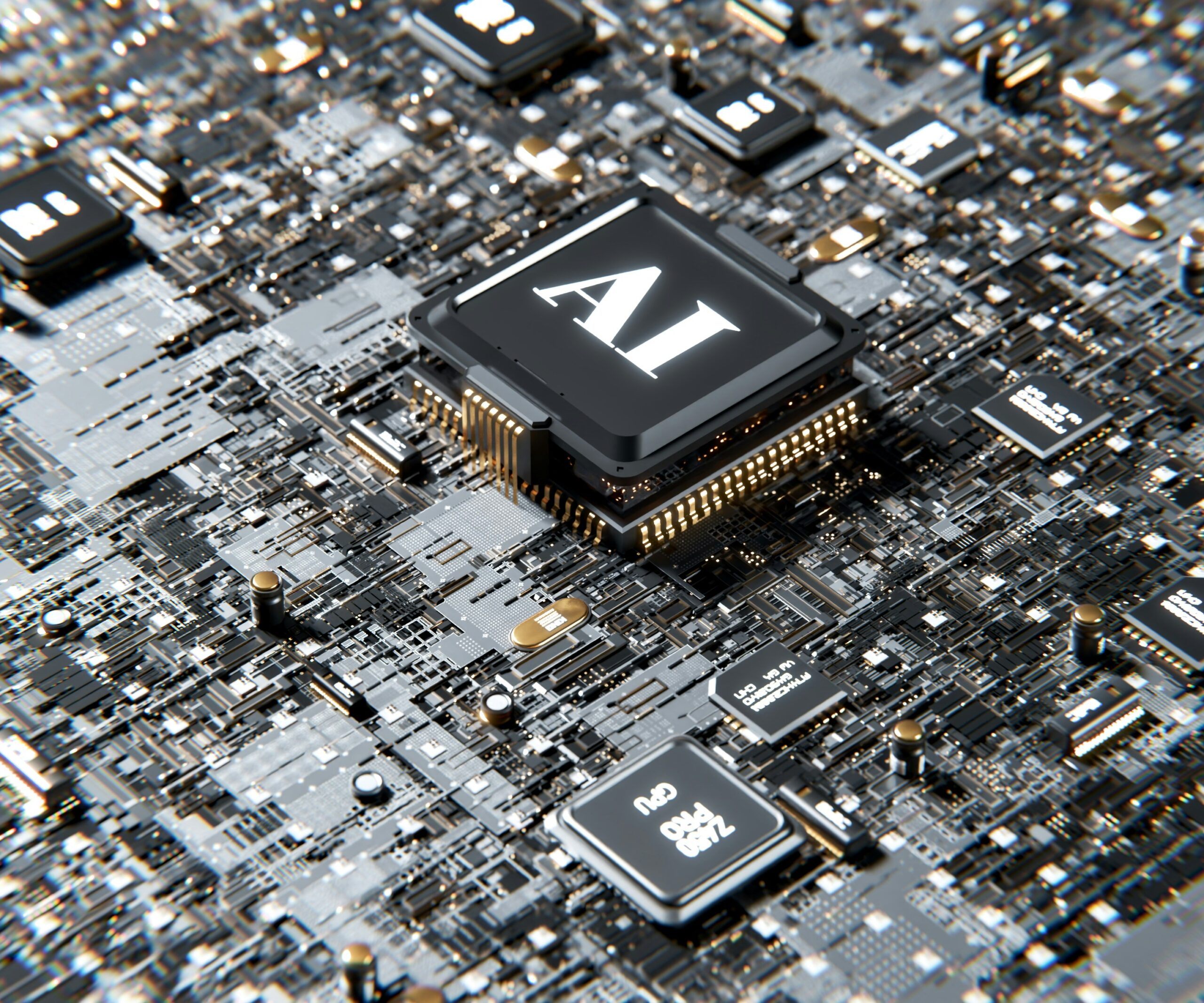Empowering Our Vision: A Friendly Dive into Worldwide Semiconductor Industry Outlook
Global Semiconductor Industry Sales
Let’s take a fun look at the semiconductor sales scene. The year 2024 has had some trends and surprises for our industry worth talking about.
July 2024 Stats
In July 2024, we saw some fireworks in the semiconductor business. As reported by the trusty Semiconductor Industry Association, global sales reached $51.3 billion, shooting up 18.7% from how things stood last July.
| Month | Sales ($ Billion) | Year-over-Year Growth (%) |
|---|---|---|
| July 2024 | 51.3 | 18.7 |
Second Quarter of 2024
The second quarter of 2024 was another great time for semiconductors. Sales hit a big $149.9 billion. This marked an 18.3% climb from Q2 of 2023. Plus, it was a 6.5% boost from the first quarter of 2024.
| Quarter | Sales ($ Billion) | Quarter-over-Quarter Growth (%) | Year-over-Year Growth (%) |
|---|---|---|---|
| Q2 2024 | 149.9 | 6.5 | 18.3 |
Our world is on a chip frenzy across all kinds of areas, with our latest semiconductor breakthroughs fueling the charge.
April 2024 Growth
April started the year on a high note. Global sales for April were $46.4 billion, clocking in a 15.8% rise from April 2023. It was the first monthly uptick we noticed this year.
| Month | Sales ($ Billion) | Year-over-Year Growth (%) |
|---|---|---|
| April 2024 | 46.4 | 15.8 |
April’s numbers set the runway for the onward months, showing the grit and growth potential of the semiconductor space. This fits right in with wider worldwide semiconductor trends.
In short, the figures for July 2024, Q2, and April tell a story of a lively and booming industry. Each spike in sales highlights our sector’s muscle and the constant drive for innovation.
For more juicy details, swing by and explore our take on emerging semiconductor technology comparisons and the buzz around global semiconductor trends.
Key Players and Market Share
Let’s gab about the folks running the show in the semiconductor gig, shall we? They’ve got the say-so and make stuff happen in the global tech arena.
Role of the United States
The U.S. is not just flipping chips, it’s ruling them! Back in 2020, nearly half of every dollar spent on semiconductors worldwide had ‘Made in the USA’ on it (IEEE). Thanks to American big shots like Intel and Qualcomm, the U.S. keeps hitting high scores in tech innovation.
Sneak peek at who’s got the dough:
| Country | Market Share (2020) |
|---|---|
| United States | 46% |
| South Korea | Not pinned down, but Samsung’s in the big leagues |
| Other Countries | Whatever’s left |
As our buds at the Semiconductor Industry Association remind us, R&D in America is just the bees knees, keeping the U.S. in the driver’s seat.
Rising Competitors
While Uncle Sam’s calling the shots, others are muscling into the game. China’s been ringin’ bells, throwing cash at R&D, and building up their in-house talent – they wanna own the field someday (IEEE IRDS).
Folks started talking about China’s hustle a few years back in 2019. This race to the top whips up fresh ideas and tech leaps, which is sweet for everyone.
| Rising Competitors | Key Tactics |
|---|---|
| China | Boosting R&D and flexing self-sufficiency |
| South Korea | Leaning heavy on the muscle of Samsung |
For more juice on how these contenders are shaking things up, scope out our piece on emerging semiconductor technologies comparison.
Impact of Rare Earth Metals
From smartphones to servers, semiconductors gobble up rare earth metals like candy. Having their hands on these metals lets players crank out snazzy chips, so whoever controls them pretty much controls the price.
China’s sitting on a gold mine – loads of earth metals – and it matters big time in making semiconductors. Their grip can bend the global supply pipeline and steer where markets head (market trends).
Here’s the scoop on who’s sitting on what:
| Country | Reserves |
|---|---|
| China | 44 million metric tons |
| U.S. | 1.4 million metric tons |
| Other Countries | Bits and bobs |
Dependin’ on these metals reminds us to keep an eye out for new materials and ways to keep our stash full (Deloitte).
Taking a good look at the movers and shakers, and the rare stuff driving it all, paints a picture of the current worldwide semiconductor industry outlook. From tech leaps to tug-of-wars over resources, the semiconductor beat just keeps on rollin’.
Influence of Macro Factors
We’re diving into how the big-picture stuff shapes the ins and outs of the global semiconductor scene. Things like our ever-growing digital lives, cities sprouting up like weeds, car makers going electric, and just the general hustle and bustle of market growth are tweaking the industry’s vibe.
Digitization and Urbanization
As the world goes more digital, semiconductors are flying off the shelves faster than ever. We’re talking about weaving digital tech into every thread of daily life and business, and that means we need semiconductors by the boatload. Cities getting bigger and the population booming add fuel to the fire, as more people are eager for the latest tech powered by these tiny devices.
Just take a look at how the market’s jumping:
| Year | Market Size (in billions) |
|---|---|
| 2022 | 556.6 |
| 2023 | 586.4 |
| 2024 | 620.8 (projected) |
Our pals over at Statista shared those numbers with us.
Automotive Industry Shift
The car world is flipping a switch to electric, and that’s putting semiconductors in the spotlight. EVs (that’s short for electric vehicles) are jam-packed with these chips, running everything from the battery to self-driving and even the tunes system. This shift is revving up the need for smart, power-packed semiconductor tech.
If you’re curious about more details on cars and semis linking up, check out our scoop on near-future semiconductor innovations.
Worldwide Semiconductor Market Growth
The semiconductor biz is buzzing thanks to the ever-growing need for powerhouse chips that save energy and stick around longer. All kinds of industries—think gadgets, phones, health gizmos, and cars—are in on this trend. Customers are after more bang for their buck, which means semiconductors aren’t slowing down anytime soon.
And then there’s IoT—those “smart” gizmos we keep plugging into our homes and lives. They need chips that sip power conservatively and perform like champs. This hunger for specialized chips is getting companies to crank out everything from tiny, energy-saving microcontrollers to beastly processors handling AI at the edge. We got more deets in our piece on global research-based semiconductor trends.
With all these big factors—going digital, city life, and the auto-tech shift—it’s clear why it’s key to keep tabs on the semiconductor scene’s what’s next. Dig into more juicy stuff with our write-up on semiconductor industry trends worldwide.
Technological Advancements
So we’re here, peeping into the crystal ball of the semiconductor sector’s future. You know these tiny chips are making massive waves, right? They’ve been keeping the tech world buzzing with innovations—little sparks igniting big changes.
Materials Innovation
Our semiconductor pals are on the perpetual hunt for materials that amp up performance and save energy, like a rockstar energy drink but for chips. Silicon is the old buddy everyone knows, but now it’s got some spiffy companions: gallium nitride (GaN) and silicon carbide (SiC). They’re like the new kids in class, smart and full of untapped potential for stuff like electric rides and green energy things.
| Material | Key Awesomeness | Where It Shines |
|---|---|---|
| Silicon (Si) | Cheap and flexible | Everyday gadgets |
| Gallium Nitride (GaN) | Turbocharged efficiency, power-packed | Electric cars, radio bits |
| Silicon Carbide (SiC) | Heat wizardry, strong power player | Juice for gadgets, eco-gizmos |
Checking out these cool materials is all part of us zooming into wild semiconductor futures.
AI and IoT Integration
AI and IoT have popped open the door to a whole new world of semiconductor play. These dynamic duos are crafting chip magic tailored for max computing power, those huge data palaces called data centers, smart spaces, and cars that nearly drive themselves (IEEE IRDS). It’s like the tech realm evolving and flexing awesome muscles.
| Tech Gizmo Part | Magic Skill | Industry Boom |
|---|---|---|
| AI Chips | Imitate brain waves, stick around memory | Zoomed-up computing, everyday AI |
| IoT Chips | Link gadgets, fuel smart tech | Homes that think, speedy webs, auto sparkle |
If you wanna geek out with these trends, have a gander at our write-up on semiconductor tech showdowns.
Sustainability Focus
Think about saving the planet one chip at a time—semiconductors are now all about that eco-friendly life. Folks are expecting companies to be the green heroes, not just in making fancy products but also in how they’re churning them out (BOSS Magazine). Those leading in green gestures get an edge, meeting both consumer love and those pesky rules.
| Green Practice | Payday |
|---|---|
| Power-smart Production | Slashes bills, shrinks footprint |
| Earth-friendly Materials | Less earth hassle |
| Greener Gadgets | Favored by planet-friendly peeps |
This is more than making tech stuff; it’s about doing right by our planet and conscious shoppers. Staying on top of eco-moves is vital for the semiconductor game’s plans. For more, swing by our chat on research-driven chip trends worldwide.
By focusing on these cutting-edge innovations, the semiconductor show goes on, dodging hurdles like Moore’s Law. For any keen-eyed analysts out there, getting a handle on these breakthroughs is key to predicting where this chip story heads next.
2021 Rebound and Beyond
The semiconductor biz has been on a wild ride lately, right? Ups and downs, thanks to market blips and that pesky pandemic. But here’s the scoop: there’s light at the end of the tunnel, fueled by tech’s cool new tricks.
Industry Outlook Post-Pandemic
So, we’re all getting through the pandemic aftermath, and looky here – our semiconductor crew’s on the brink of shaking things up big time. We hit a rough patch back in 2019, and COVID in 2020 didn’t help. But 2021? It’s looking brighter, with AI, IoT, and 5G throwing us a lifeline (check out IEEE IRDS if you’re into the nitty-gritty).
Zooming into 2024, it’s all about bigger sales and new players joining the party. AI and IoT are set to be the bread and butter for keeping those cash registers singing (IEEE IRDS).
If you’re curious about how the pandemic changed the game, check out our global research-based semiconductor trends section.
Moore’s Law Challenges
Moore’s Law – you know, that thing about doubling transistors on chips every couple of years while the price tags drop – well, it’s been hitting some bumps. The industry’s scratching its head for fresh ideas to keep the show going. Enter “More Moore” and “More than Moore,” two game plans for staying ahead of the curve (IEEE IRDS).
Breakdown of the game plans:
| Plan | Details |
|---|---|
| More Moore | Shrink those components to keep upping performance and slashing costs. |
| More than Moore | Think outside the shrink: mash in new tech to beef up device functions. |
Want to geek out on this? Dive into our near-future semiconductor innovations page.
Future Growth Strategies
To make waves in the industry, we’ve got to keep those wheels turning. Here’s our playbook:
- Plugging Into AI and IoT: By hooking up with AI and IoT, we can cook up chips that mimic our brain synapses and crank up nonvolatile memory tech (IEEE).
- Banking on 5G: With 5G on the rise, the need for high-tech semiconductors is gonna shoot up. Get ahead, and we’re golden.
- Going Green: Sustainability’s not just a buzzword. Being eco-friendly while keeping the power going is the new cool.
Things are looking up as we roll with these plans. For more juicy details on what’s trending, wander over to our emerging semiconductor technologies comparison piece.
By hopping on these trends, we’ll be cruising confidently through the twists and turns of the semiconductor universe. Let’s do this!
AI and Semiconductor Market
When it comes to AI and the semiconductor market, it’s like peas in a pod, folks! AI is a real heavyweight, flexing its muscles and driving the need for top-notch semiconductors. The way AI is advancing is like watching a blockbuster, with the semiconductor world keeping pace to deliver what consumers want.
AI’s Impact on Demand
AI is pushing semiconductors into high gear! The thirst for powerful computing is like a caffeine buzz for the industry, urging quick and clever innovations. We’re seeing a big push for AI-specific chips and it’s no surprise given the hunger for speed and brains in tech today.
| AI Application | Semiconductor Demand Impact |
|---|---|
| Data Centers | Riding the high tide |
| Smart Homes | Making a decent splash |
| Autonomous Vehicles | Cruising high demand |
| Healthcare | Steady climb |
With demand soaring, companies are all about creating fast, efficient chips that get along with AI’s ambition. Imagine the difference in data centers, smart homes, self-driving cars, and beyond! The semiconductor biz is buzzing with excitement and innovation.
Advanced Semiconductor Development
Keeping up with AI’s hefty demands means semiconductors need to level up, and quick! We’re seeing strides in tech that handle AI’s brainy challenges, like chips that think like humans or remember stuff even if the power goes out. Talk about smart tech.
But it’s not just about speed and power anymore. Cutting down on energy use and heat is like the new cool kids on the block, making AI gear more user-friendly and wallet-friendly, too.
| Technology | Key Feature | Benefit |
|---|---|---|
| Neuromorphic Chips | Thinks like us | Brainy efficiency boost |
| Nonvolatile Memory | Keeps data safe | Power-saving vibe check |
These developments show the industry’s pushing the envelope in semiconductor smarts, making sure AI doesn’t just keep up—it leads the charge into tomorrow.
Consumer Innovation
AI isn’t just a techie trend—it’s shaking up how we live, work, and play. The team-up between AI and semiconductors is sparking loads of new toys and tools for us gadget geeks out there. AI-powered home gadgets are popping up everywhere, just like mushrooms in a rainy season!
To keep up with this boom, semiconductor champs need to keep the gears turning. What’s in the spotlight? Here’s a snapshot:
- Smartphones: Juicing up AI smarts with cool camera tricks and crystal-clear voices.
- Wearable Tech: Personalized fitness pals right on your wrist.
- Smart Home Devices: Leveling up home automation with AI smarts that learn and adjust.
For the lowdown on emerging semiconductor technologies comparison, these trends offer clues for the future and where to park your investment dollars.
By welcoming the mix of AI with semiconductors, we’re not only seeing a tech evolution but a whole new way of living. Staying in the loop on these trends is crucial for anyone looking to keep their fingers on the pulse of the industry.
5G Technology and Semiconductors
5G is practically shaking things up in the semiconductor game. This tech juggernaut is cranking up the pressure for better, faster, and more efficient semiconductor chips as these networks sprout up like wildflowers worldwide.
What Chips Need for 5G
For 5G to shine, semiconductors must level up their game. We’re talking more bandwidth, less lag, and power-sipping efficiency. Companies are hustling to whip up chips that play nice with these demands, paving the way for edge computing, souped-up cities, and mind-bending augmented reality. We’re in an era where munching through piles of data swiftly is not just nice-to-have, it’s a lifeline (Carnegie Endowment for International Peace).
Here’s what 5G chips should have under the hood:
- Fast Lanes (High Bandwidth): Letting data zip through without hitting the brakes.
- Fast Action (Low Latency): Chopping wait times for data to almost zilch.
- Eco Mode (Energy Efficiency): Sipping power lightly for the greener good.
Connection Innovation
This 5G train is fueling a fresh wave of innovation, giving semiconductor makers a run for their money. They’re zeroing in on semiconductors that can handle 5G’s unique quirks by:
- New Stuff (Advanced Materials): Grabbing the chance to use spiffy materials to boost performance.
- Tiny Mighties (Smaller Nodes): Crafting mini yet mighty nodes that crank up data-crunching oomph.
- Brainy Chips (AI Integration): Folding in artificial smarts for zippier data chops.
Such tweaks make sure semiconductors can keep up with 5G’s shifting demands (Deloitte).
| Feature | Yesterday’s Chips | 5G’s Mighty Chips |
|---|---|---|
| Data Speed | Meh | Zoom |
| Wait Time | So-so | Fast |
| Smarts | Basic | AI/IoT Whiz |
The IoT and Edge Hustle
With 5G’s surge, the call for semiconductors designed for gizmos and edge computing is blasting off. Such chips are pivotal for handling data on-the-spot, making decisions in a snap. They’re slicing the need for central processing, meaning speedier responses and less traffic cluttering the info highway (Statista).
Hotspots for IoT and Edge:
- IoT Wonders: Chips need to be power misers for longer juice.
- Edge Smarts: Muscled-up processors for instant data tackling.
- Smart City Life: Efficient semiconductors for hassle-free gadget running.
Curious about how cutting-edge tech is stirring up the semiconductor pot? Check out our breakdown on emerging semiconductor technologies comparison.
As 5G gears up, chips become the MVPs. By jumping on board with these leaps, we’re setting the stage for a world that’s more tied together and brainy as ever.
Dig deeper into near-future semiconductor innovations and global research-based semiconductor trends and stay ahead in this thrilling ride.
Trends and Indicators
Keeping an eye on trends and signs helps us get a feel for what’s shaking up the world of semiconductors. Let’s chat about the cash flow, who’s grabbing the most market pie, where sales might be headed, and what in the world is happening with those stockpiles.
Revenue and Market Shares
Cash and who’s raking it in—a true look into how the semiconductor biz is doing. The folks at Statista are there to count every buck that manufacturers pull in (sorry resellers, you’re not in this round-up).
Back in 2020, American firms were the rock stars, boasting a whopping 46% of global sales (IEEE). The cool kids included Samsung from South Korea, plus a handful of U.S. champs. But, keep an eye out, ’cause China’s rising fast in the ranks! Here’s a sneak peek at how they’ve all been doing:
| Year | Revenue (US$ Billion) | Revenue Change (%) | Market Share (%) |
|---|---|---|---|
| 2020 | 481 | 6.8 | 46 (US) |
| 2022 | 574 | 9.4 | 50 (US) |
| 2023 | 520 | -9.4 | 48 (US) |
| 2024 | 588 | 13.0 | 52 (US) |
Numbers spilled by Statista and Deloitte.
Sales Forecast
The year 2023 wasn’t a walk in the park for semiconductors, with a dip in sales down to US$520 billion—a slump like that hasn’t been seen since 1990 (Deloitte). But cheer up, folks! There’s sunshine ahead in 2024. Sales are geared up to hit US$588 billion, shooting up 13% from 2023 and even going beyond the 2022 peak of US$574 billion.
Here’s a peek at the road ahead:
| Year | Sales (US$ Billion) | Forecast Change (%) |
|---|---|---|
| 2023 | 520 | -9.4 |
| 2024 | 588 | 13.0 |
Want the latest scoop on semiconductor trends? Hit up our section on global research-based semiconductor trends.
Inventory Impact
Semiconductors can toss and turn, causing inventory levels to rise and fall. Take a look at memory chips. Their sales took a nosedive by 31% (a whopping US$40 billion) in 2023 but are getting back in shape for 2024 to match those of 2022 (Deloitte). Apart from memory, the bump was a mere 3% in 2023. Keeping tabs on inventory shifts sheds light on the economy’s supply murmurs and what’s up ahead.
| Year | Memory Chip Sales (US$ Billion) | Industry (excl. Memory) Change (%) |
|---|---|---|
| 2023 | -31% | -3% |
| 2024 | Recovery Expected | — |
Keep current with the movers and shakers of trends by peeking at emerging semiconductor technologies comparison and semiconductor industry trends worldwide.
Geopolitical Shifts
Hey there! The semiconductor scene is feeling the heat thanks to world events that are shaking things up with how these tiny tech wonders are produced, shared, and dreamt up. Let’s dig into how the chip shortage, complicated U.S.-China dynamics, and world supply chain shenanigans are playing out.
Semiconductor Shortage Impact
The recent chip crisis was like watching dominoes fall, affecting everything from planes to cars. Believe it or not, about 169 industries felt the crunch. It kicked off with a mix of messed-up demand during the COVID-19 chaos, fires and quakes crashing the party, and the struggle to keep up with Moore’s Law. Oh, and let’s not forget the U.S. putting its foot down on what China could get its hands on.
| Industry | Impacted by Chip Shortage |
|---|---|
| Aerospace | Uh-huh |
| Automobiles | You bet |
| Consumer Electronics | For sure |
| Medical Devices | Absolutely |
U.S.-China Relations
The drama between the U.S. and China has put the pedal to the metal for China’s semiconductor ambitions. Thanks to Uncle Sam’s export rules, China’s been hustling to upgrade its tech game. Nineteen out of the top twenty fastest-growing chip firms are now Chinese! Talk about leveling up. China’s pouring cash into cutting ties with foreign tech, especially from the U.S.
Then there’s the nitty-gritty of the Foreign Direct Product Rules (FDPR), making it tougher for Chinese companies to snag the latest chip tech. This has pushed China to ramp up its chip-making muscle and given a serious nudge towards a U.S.-China tech breakup.
Global Supply Chain Changes
With supply chains all over the map thanks to geopolitical tension, there’s a sort of unwritten agreement to keep one’s distance. Samsung, for instance, is planting its chip-making flag in multiple spots around the globe. Across the pond, even UK companies are playing the shuffle game to trim down their reliance on China.
| Company | Supply Chain Strategy |
|---|---|
| Samsung | Spreading out manufacturing sites |
| UK Businesses | Reevaluating their supply chains |
These big moves are flipping the semiconductor industry on its head. For extra know-how on where things are headed, don’t miss our deep dives on near-future semiconductor innovations and how new chip technologies are stacking up.













